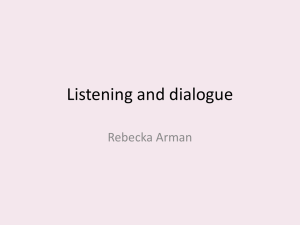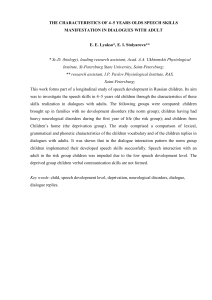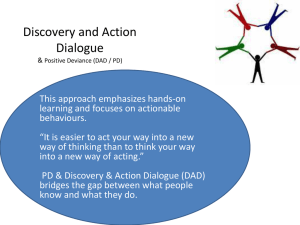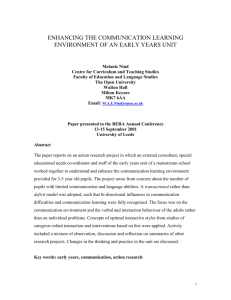To appreciate this lesson, we must look at this lesson from two levels
advertisement
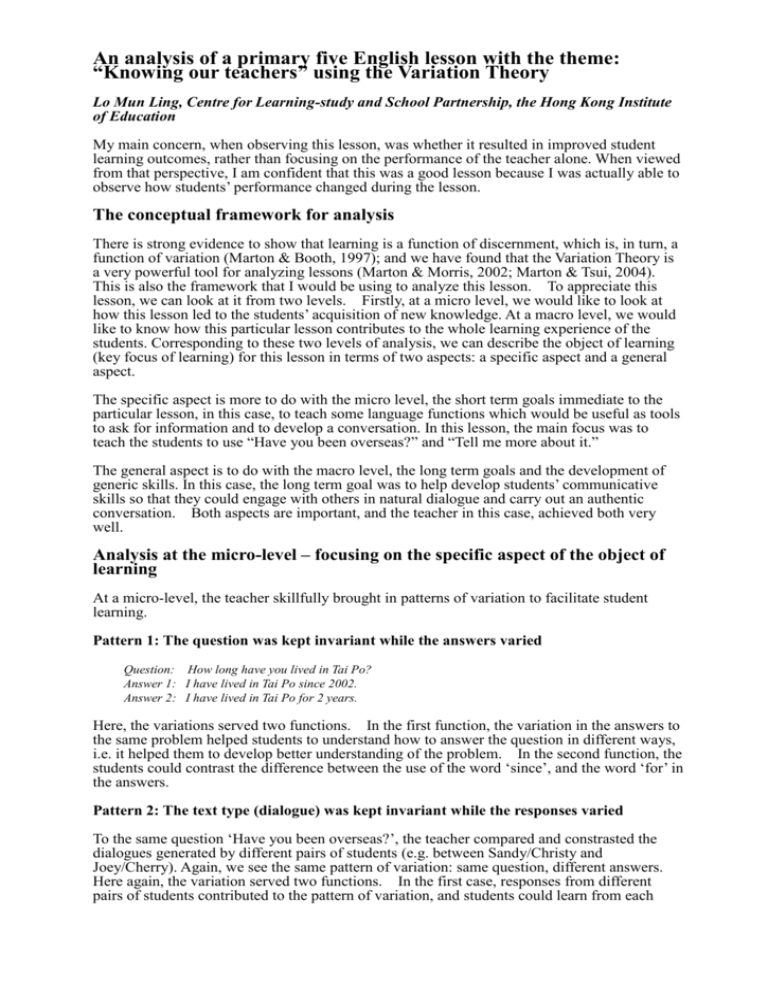
An analysis of a primary five English lesson with the theme: “Knowing our teachers” using the Variation Theory Lo Mun Ling, Centre for Learning-study and School Partnership, the Hong Kong Institute of Education My main concern, when observing this lesson, was whether it resulted in improved student learning outcomes, rather than focusing on the performance of the teacher alone. When viewed from that perspective, I am confident that this was a good lesson because I was actually able to observe how students’ performance changed during the lesson. The conceptual framework for analysis There is strong evidence to show that learning is a function of discernment, which is, in turn, a function of variation (Marton & Booth, 1997); and we have found that the Variation Theory is a very powerful tool for analyzing lessons (Marton & Morris, 2002; Marton & Tsui, 2004). This is also the framework that I would be using to analyze this lesson. To appreciate this lesson, we can look at it from two levels. Firstly, at a micro level, we would like to look at how this lesson led to the students’ acquisition of new knowledge. At a macro level, we would like to know how this particular lesson contributes to the whole learning experience of the students. Corresponding to these two levels of analysis, we can describe the object of learning (key focus of learning) for this lesson in terms of two aspects: a specific aspect and a general aspect. The specific aspect is more to do with the micro level, the short term goals immediate to the particular lesson, in this case, to teach some language functions which would be useful as tools to ask for information and to develop a conversation. In this lesson, the main focus was to teach the students to use “Have you been overseas?” and “Tell me more about it.” The general aspect is to do with the macro level, the long term goals and the development of generic skills. In this case, the long term goal was to help develop students’ communicative skills so that they could engage with others in natural dialogue and carry out an authentic conversation. Both aspects are important, and the teacher in this case, achieved both very well. Analysis at the micro-level – focusing on the specific aspect of the object of learning At a micro-level, the teacher skillfully brought in patterns of variation to facilitate student learning. Pattern 1: The question was kept invariant while the answers varied Question: How long have you lived in Tai Po? Answer 1: I have lived in Tai Po since 2002. Answer 2: I have lived in Tai Po for 2 years. Here, the variations served two functions. In the first function, the variation in the answers to the same problem helped students to understand how to answer the question in different ways, i.e. it helped them to develop better understanding of the problem. In the second function, the students could contrast the difference between the use of the word ‘since’, and the word ‘for’ in the answers. Pattern 2: The text type (dialogue) was kept invariant while the responses varied To the same question ‘Have you been overseas?’, the teacher compared and constrasted the dialogues generated by different pairs of students (e.g. between Sandy/Christy and Joey/Cherry). Again, we see the same pattern of variation: same question, different answers. Here again, the variation served two functions. In the first case, responses from different pairs of students contributed to the pattern of variation, and students could learn from each other different ways of answering the same question, thus contributing to a deeper understanding of how the dialogue could be generated. In the second case, the teacher requested the students to contrast the two dialogues. The students could actually point out by themselves the difference between the two, e.g. the dialogue between Sandy and Christy was better because the two students were more polite, and they had more and richer ideas, the conversation was richer in details and in interaction. The teacher asked the students to identify what the second pair did to add to the dialogue, e.g. the conversation could have been closed when Sandy replied that she had not been overseas. But Christy quickly changed the subject to ask about her hobbies. Then Sandy also made a contribution to the conversation by asking Christy “What about you?”. which greatly helped to sustain the dialogue. By contrasting a ‘good conversation’ with one which is not so good, the students could discern what was actually required of a good conversation and they all said that they were confident that they would be able to carry out another dialogue of similar quality. Analysis at the macro-level – focusing on the general aspect of the object of learning The general aspect of the object of learning was achieved through careful planning and organizing the learning experience for the students, so that the lesson not only achieved the short term goal of teaching some language functions, it also enhanced the capability of the students in carrying out conversations. The teacher achieved this through another two different patterns of variation. Pattern 3: The purpose of knowing more about someone remained unchanged, but the targeted person varied The theme of the lesson varied from “knowing your teachers’ to ‘knowing your classmates’, to ‘knowing your ‘visitors’. Here, all other things remained unchanged except the targeted person (from teachers, to classmates, to visitors). Students therefore would be able to generalize the use of the language functions to other persons and apply the knowledge they acquired in this lesson to other situations. Pattern 4 : The language functions remained unchanged while the content of the dialogue varied The same question and answer in fact appeared in all the dialogues: Have you been overseas? Yes, I have been to (Thailand). However, the whole dialogue was very different from pair to pair, as the students were encouraged to use their prior knowledge to contribute to the dialogue, so that they could add in comments, ask for elaboration, etc. In this way, the conversation was enriched, linking what students had learnt in the past to the present lesson. At the same time, the new knowledge that they acquired in this lesson was being embedded in a meaningful context, which enhanced and deepened the understanding of how the new knowledge could be used. Conclusion Ms Leung is a very gifted English teacher, and for that she was awarded the Chief Executive Award for Teaching Excellence for English teaching. What I have tried to do, to some extent, is to demystify what excellent teaching is. If we can analyze and explain why her lesson is so good, using an analytical framework, then other teachers may be helped to attain similar level of excellence by applying the same framework to plan their lessons in the future. I did it using the conceptual framework of variation, and I have shown that although the teacher herself may not be aware of it, this lesson demonstrated a good use of patterns of variation to bring about deeper and more worthwhile learning by the students.




